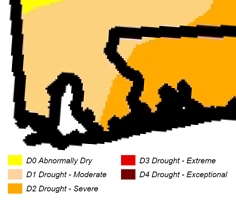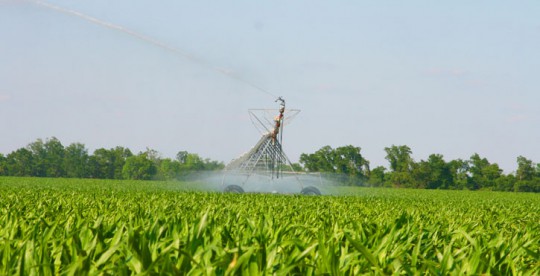Drought Continues, Worries Area Farmers
February 15, 2012
Despite our recent rains, the North Escambia area remains in a drought as area farmers head toward spring planting season.
 The latest U.S. Drought Monitor map shows the area in a moderate to severe drought — a drought that has persisted about a year. Most of Escambia County in Florida, except for an area along the Alabama state line, and Santa Rosa County are in severe drought. Escambia County, Alabama, and adjacent areas in Florida are in a moderate drought.
The latest U.S. Drought Monitor map shows the area in a moderate to severe drought — a drought that has persisted about a year. Most of Escambia County in Florida, except for an area along the Alabama state line, and Santa Rosa County are in severe drought. Escambia County, Alabama, and adjacent areas in Florida are in a moderate drought.
Less than half the normal precipitation fell across much of the are during the last 90 days with some areas with a deficit of as much as 10 inches in the past four months. The seasonal drought outlook for the period through April 30 does not show any improvement for the North Escambia area with overall dry conditions continuing.
Last year, Escambia and Santa Rosa counties were declared federal disaster areas due to the combined effect of excessive drought and the summer’s high temperatures. Many farmers lost a large percentage of their crops to the dry soils.
The U.S. Drought Monitor is published by the National Drought Mitigation Center at the University of Nebraska-Lincoln using a variety of climatic data.
Pictured top: A field of corn is irrigated last May at Highway 4 and Dortch Road in Bratt. NorthEscambia.com photo, click to enlarge.
Comments
4 Responses to “Drought Continues, Worries Area Farmers”




This is only the beginning. Conserving will help, but that is just one measure
we need to be taking. No one seems to listen to anything anymore. If people don’t wake up soon it will all be gone and your children will have bleak futures.
If the birds, frogs, bees, polor bears and what ever can’t take it, we will
perish as well.
Something to consider: as global warming happens, part of the effect is the widening of the tropic zone, which is now considered 2 degrees higher and lower around the world, thus pushing up the arid sub-tropics up. The impact is thought to hit the SW of the USA much harder than the SE, but weather patterns will change from normal weather patterns of the past to less rain and when it does more severe type storms in the SE.
Thank goodness for crop and livestock insurance!
CONSERVE!! Conserve water and soil every day.